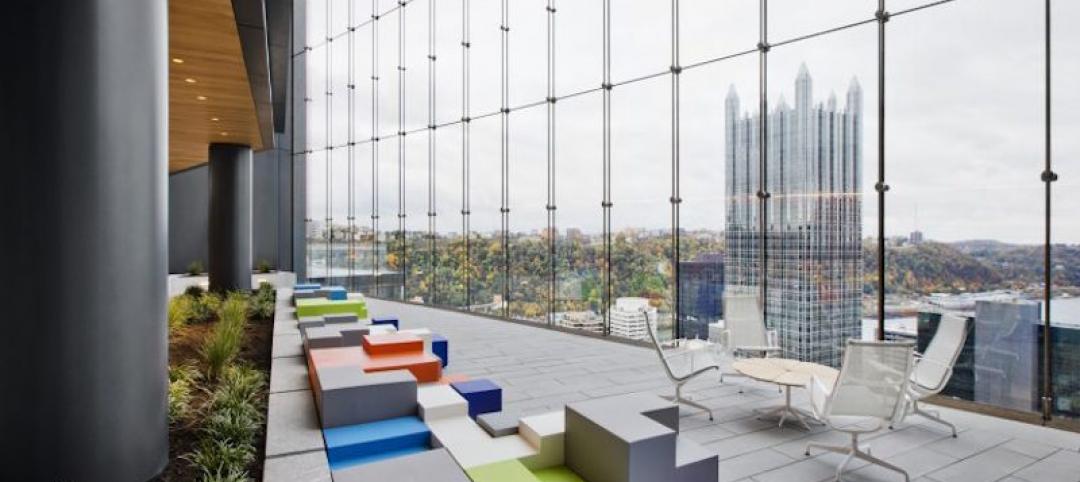Building Teams will find more ways to enhance water efficiency indoors than ever before. These include dishwashers with reduced water consumption and low-flow toilets with improved circulation design. These new low-flow toilets come with pressure-assisted and vacuum-assisted flush fixtures, which don’t rely solely on gravity and flow for movement of waste, says James Del Monaco, Sustainability Director at P2S Engineering.
Ultra-low-flow fixtures and waterless urinals are also being adopted. One Swedish maker has created a line of toilets that use 0.16 gallons of water per flush. A second fixture design uses half that, only 0.08 gallons per flush, with a vacuum assist. Standard U.S. low-flow models are calibrated for 1.6 gallons per use.
“In bathrooms, other high-efficiency plumbing fixtures should be used,” says Jorge Mastropietro, AIA, Principal of Jorge Mastropietro Architects Atelier. “This includes water-efficient shower heads, and faucets with motion sensors or timed operation.” The architect adds that even soap selection in a commercial restroom can impact water use: Studies show that handwashers using foaming hand soaps use about 16% less water than those using liquid soaps, because less water is required to rinse it off.
Mastropietro encourages his multifamily and institutional clients to buy high-efficiency washers and dryers, which may have a slight price premium. “For kitchens and laundry facilities, the use of Energy Star-rated equipment will result in water savings,” says P2S’s Del Monaco. “Laundry facilities can also use ozone systems to reduce water and energy consumption.”
Project teams with leadership from mechanical engineers and plumbing engineers have been successfully incorporating water reuse concepts in their restrooms, foodservice areas, and other places where water quality is ideal for graywater applications. “Graywater can be recycled for toilet flushing and irrigation, provided that the user does not drain toxic ingredients into the system,” says Mastropietro. According to the engineer Del Monaco of P2S, “There are multiple factors to consider when decided if a graywater system can be utilized, such as estimating the amount of available graywater to be generated, the space and costs associated with storing and treating graywater, as well as soil quality, landscaping, and site topography.”
Both professionals recommend the use of life cycle cost analysis (LCA) should be performed to identify the feasibility of incorporating graywater technologies. “This should include an understanding of the maintenance and intangibles associated with the use of such a system,” adds Del Monaco. Recently a number of fixture manufacturers have introduced small-scale water reuse products -- often called graywater diverters -- and several companies offer packaged systems designed for two basic applications: Irrigation only vs. graywater reused for indoor toilet flush, laundry, fire protection, building cleaning, car and truck washes and landscape irrigation. For irrigation, the system comprises essentially diverted water sources that are mechanically filtered and moved by gravity or pumped to subsurface (underground) irrigation points. For the multiple-use systems, the collected water also must be buffered, treated and disinfected to meet building codes and health regulations.
“Graywater reuse for interior plumbing is not a cheap strategy and should be considered where it does not place undue burden on project costs,” says Skolnick’s Gross.
In addition to domestic water recapture, many mechanical systems and manufacturing processes that use water are ripe for recycling, says Breeze Glazer, LEED AP BD+C, Senior Associate and Sustainable Design Leader in Perkins+Will’s New York officer, who has worked on dozens of LEED Platinum and LEED Gold projects. “For example, condensate capture is another strategy to be considered,” he says. “It’s naturally produced when air passes over the cooling coils of any HVAC system. The typical practice is to drain the water into the waste water system and sent for municipal treatment along with other effluents. However it is a relatively high-quality water source that can be captured in a cistern and used for nonpotable water needs in the building such as landscape irrigation or cooling tower makeup without substantial alterations to the plumbing system.”
Related Stories
Green | Feb 10, 2017
Radical proposal would transform Chicago’s Lake Shore Drive and create new lakefront park space
Over 70 new acres of public space would be created between Ohio Street and North Avenue.
Green | Feb 6, 2017
A to Z: Seoul’s elevated park features 24,000 alphabetized plants
The plants will represent 250 species found in South Korea.
Green | Feb 3, 2017
Nanjing Green Towers will be Asia’s first vertical forest
The project will be covered in 1,100 trees and 2,500 cascading plants and shrubs.
Sustainability | Jan 27, 2017
An office building proposed for Norway would generate more power than it uses
Over it’s 60-year lifespan, the power generated form the project would cover the energy cost of construction, production, and material transportation.
Sustainability | Jan 24, 2017
From an industrial park to an eco-neighborhood in Brussels, Belgium
At the heart of Vincent Callebaut Architectures’ eco-neighborhood will be three 100-meter-tall Vertical Forests.
Sustainability | Jan 19, 2017
How NYC is slashing 80% of greenhouse gas emissions by 2050
To help one of the most complex cities in the world develop an actionable strategy to meet visionary GHG reduction goals, we focused on strategies for deep carbon reductions for the city’s entire building stock, which constitutes 73% of citywide emissions, writes HDR's Jennifer Bienemann.
Game Changers | Jan 18, 2017
Turning friction into power
Research on piezoelectricity moves closer to practical applications for infrastructure and buildings.
Green | Jan 17, 2017
Everything you need to know to sound brilliant when talking about biophilia
We need nature in our everyday lives – which is why it’s so important to bring nature into the built environment.
Green | Dec 22, 2016
New tool makes it easier to share building energy efficiency information
The tool standardizes data collection from efficiency projects.
Sustainability | Dec 14, 2016
A floating, mobile gym powered by human energy envisioned for the Seine River
Energy created by those exercising within would power the gym down the Seine.
















